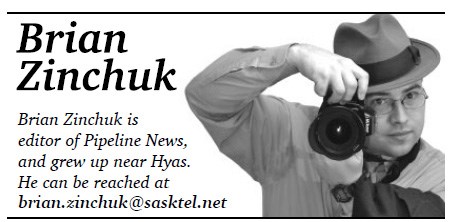
The last week in May sees me in Bismarck, N.D., for the Williston Basin Petroleum Conference. It alternates between Regina one year, and the other in Bismarck.
This is my fourth time at this conference.
Each time I have made a point of driving through Williston, epicentre of the boom, just to see what is really happening. Each time I’ve gone through, it’s been astonishing.
In 2014 it was just crazy. The road between Watford City and Williston had become known as “The Gauntlet.” Driving down it was worth your life. A local from Williston recommended I stay off it, but I wanted to see for myself. They were right.
It was like rush hour on the Deerfoot Trail in Calgary, except instead of cars, it was tanker semis, frac pressure units, flatbeds and one-tonnes pulling 35-foot trailers making suicide passes. In the midst of all this, the state was widening the road to four lanes (not twinning it, as is the Saskatchewan custom), which meant there was road construction all along the route. Nearly every side road had a drilling rig or two on it, as there were 186 rigs working, and all this traffic was meant to service those rigs and the completion of the wells they drilled.
On May 23, the roadwork had been all completed except for a twinned bridge across the Missouri River just south of Williston. Watford City had been bypassed. But more importantly, the traffic had vanished. This four-lane road was now not busier than Highway 10 from Yorkton to Regina. It was a leisurely pace where one could use cruise control instead of white-knuckling it.
We stopped at a Hawaiian restaurant in Williston mid-afternoon, when you’d expect the place to be empty. It was. The two workers there had both come from elsewhere to join the oil boom, just before it went bust. One was from Indiana, the other from Washington state. One worked as a cook at two camps that had been shuttered. The other worked in administration for an oilfield construction company where the staffing dwindled until she was essentially the last woman standing in her department, then her hours were going to be cut to the point where she asked for a layoff. Both were happy to have found jobs, essentially “normal jobs,” in Williston.
By the time we got to Bismarck, I realized we had not seen one drilling rig – not one – during the whole trip. The 28 working that day (down 85 per cent from two years ago, and 87.6 per cent from the peak) had all concentrated in the heart of the play. The periphery had been abandoned.
There were 930 wells drilled, but not completed, in the state. Each one is expected to average about 1,000 barrels per day for the first 30 days before production drops off substantially.
The conference itself is half the size it was two years ago. With roughly half the booths sold, they no longer needed to use the arena for speakers, instead using the vacant end of the exhibit hall. That hall had been doubled in size to accommodate this show.
Attendance was down by a little less than half, too. It had been buoyed by the big news that presumptive Republican presidential nominee Donald Trump would be filling that otherwise unused arena on the last day.
Oil today might hit US$50 per barrel. That had been the magical number many people were saying in January we needed to see for activity to resume. Well, no magic is being worked today in either Saskatchewan or North Dakota.
It’s going to take more than $50 to see this bust turn around just yet. What that is, I don’t know yet.
��



